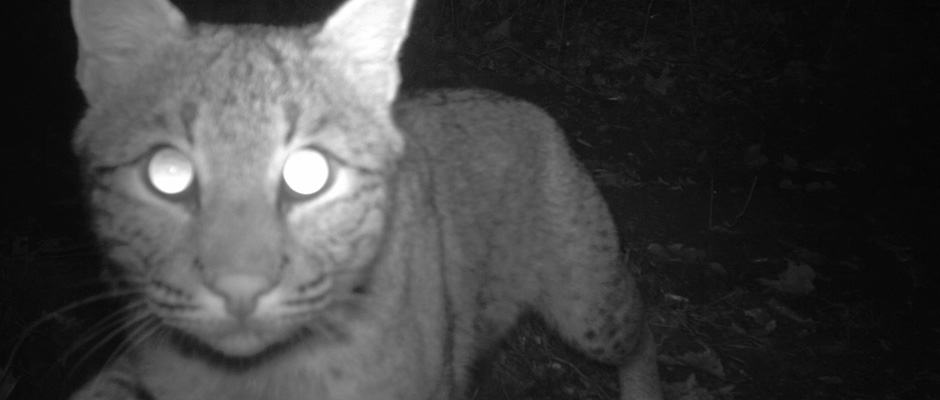Share this article
Wild Cam Series: Bobcat Ranges
This photo essay is part of a new series from The Wildlife Society featuring photos and video images of wildlife taken with camera traps.
TWS Member Tracks Bobcat Habitat
Camera traps have helped to bring the cat out of the bag when it comes to having a more accurate model of population density.
John Clare, member of The Wildlife Society, developed a new predictive model for his graduate research at the University of Wisconsin-Steven’s Point to infer the population density of elusive bobcats (Lynx rufus) at a landscape scale.
“The challenge there is that in most monitoring situations there is some kind of data you can look at for comparison. But here, there was essentially no data available,” said Clare, who now works with the Maine Cooperative Fish and Wildlife Research Unit. As part of the study — recently published in The Journal of Wildlife Management — Clare and his colleagues developed a camera trap system to watch how often bobcats turned up at different kinds of landscape.
To get a view of how this study was conducted, the research is presented below through a photo essay. The images were taken from several different locations in the study, and all are courtesy of Clare and the Wisconsin Department of Natural Resources Bureau of Science Services, and the University of Wisconsin-Stevens Point.
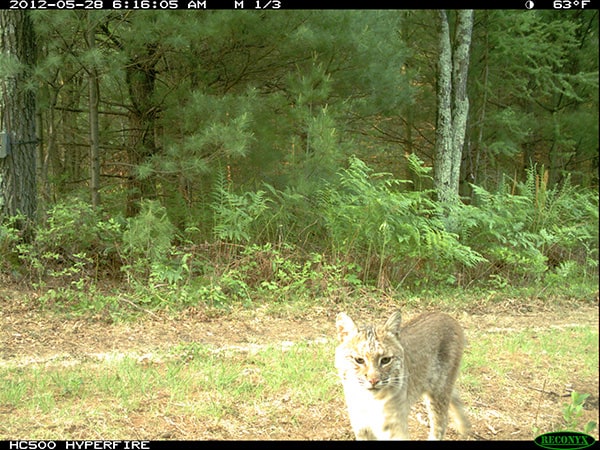
Camera traps gave researchers an idea of bobcat activity across 1,800 square kilometers of area. By using a model that predicted bobcat presence in diverse landscapes, they could extrapolate the results of that area into a further 12,200 square kilometers. “Bobcat density was highest in forested regions with interspersed wetlands,” Clare said. The result was a baseline estimate about how many bobcats would turn up in an area of 14,000 square kilometers south of Highway 64 in Wisconsin.
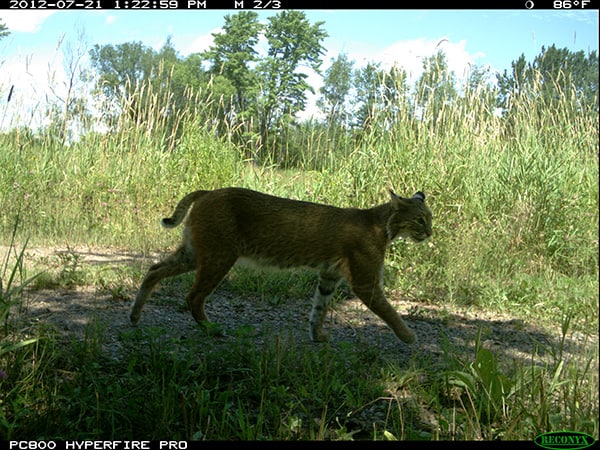
Researchers placed camera traps in areas they presumed to be trails or other places bobcats were likely to travel. Fur markings on the inside of the bobcat’s legs, most visible through flank shots like this, were used as a kind of fingerprint and image sequences were assigned to individual felines.
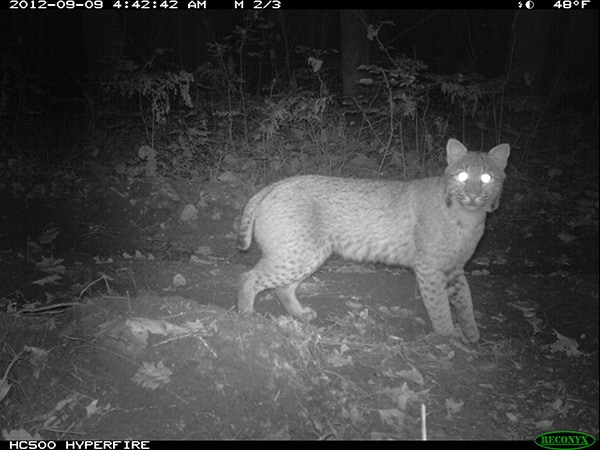
Bobcats were typically caught on camera at dawn, dusk or night and, according to Clare, appeared to prefer well-beaten paths rather than smaller game trails. The traps use an infrared flash from LED bulbs, which is harder to see from a distance and “theoretically” deters theft.
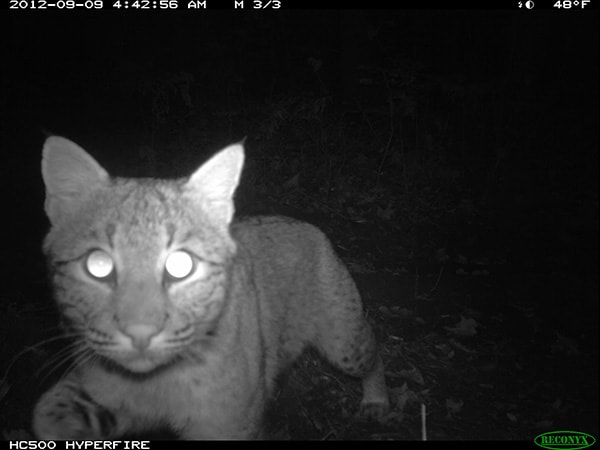
“Bobcats have extremely acute visual and auditory capabilities,” Clare said. “Primary prey species in the study area included lagomorphs, rodents, upland game birds, and deer.” This flash “often appeared to rouse animal curiosity,” according to Clare, as can be seen as the same cat from the last shot moves in for a close-up portrait. “But there was no evidence the flash led to any trap-happy or trap-shy response.” Although the team didn’t have any camera casualties from bobcats, other animals such as fishers (Martes pennanti) and bears have been known to knock camera traps around a little.
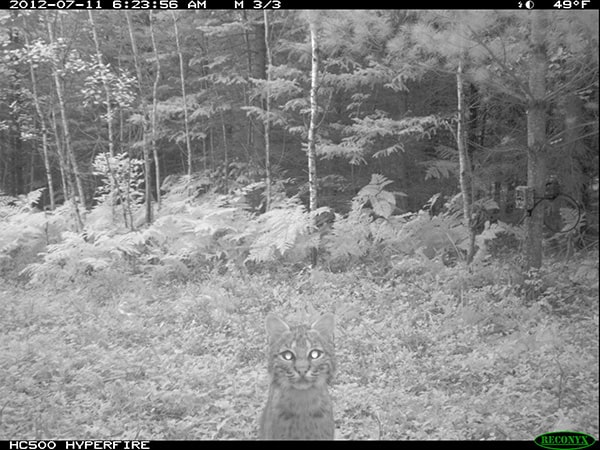
While shots like this may be full of personality, they don’t reveal fur markings and, as a result, aren’t all that useful for identifying individuals. To get around this, researchers often paired cameras at individual stations to capture simultaneous images of individuals along both flanks — something like an instant bobcat mug-shot.
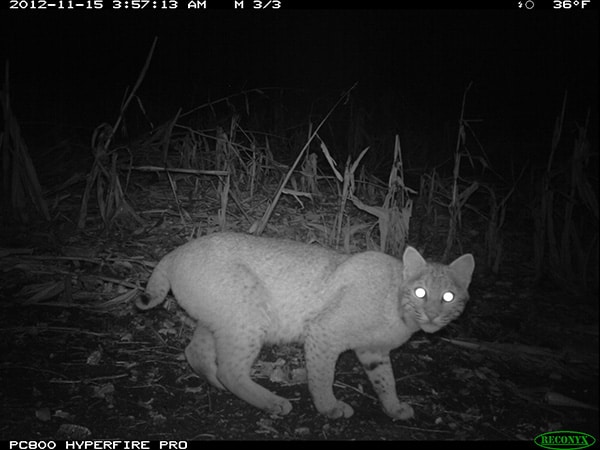
Data gathered from the traps indicated that bobcats were a little more leery of areas with more cropland. “Individual detection patterns were also altered in agricultural regions, with evidence that fragmentation spurred increased individual use of forested patches,” Clare said. Nonetheless, the numbers they discovered were high enough to spur the Wisconsin state government into opening a bobcat trapping and hunting season in that area in 2014.
If you’re working on a research project and have camera trap photos you’d like to share, email Joshua at joshua.learn@wildlife.org.
Header Image: Image Credit: John Clare and the Wisconsin Department of Natural Resources Bureau of Science Services, and the University of Wisconsin-Stevens Point.



